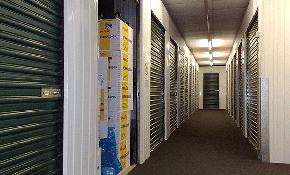Despite complex conditions and a lack of investor confidence, there’s reason to be optimistic in 2024. According to Colliers’ fourth annual Global Investor Outlook report, the year will bring commercial real estate opportunities to investors who are prepared to seize them.
As Aaron Jodka, director of research for US Capital Markets, and David Amsterdam, president of US Capital Markets and Northeast Region, report, Colliers expects positive movement away from this year’s muted investment activity and investor anxiety.
“A near-record amount of uninvested capital targeting North American real estate is sitting on the sidelines, likely to be unleashed when a lower, or at least more stable, interest rate environment takes hold,” says Jodka. “While this rebound may not result in a broad-based surge in investment volumes, it is likely to prompt a flurry of deals as prices decline and distress forces more assets to be put up for sale.”
Opportunities Emerging
Colliers expects debt markets to stabilize and for the separation between buyer and seller expectations to soften. These trends will help investors pursue numerous strategic paths across sectors and throughout the capital stack in 2024. Investors, including private capital players such as family offices, are becoming more aware of the opportunities emerging in areas like conversion and redevelopment, high-end office and specialized industrial.
What does it say about industrial product when investors with redemption queues are parting with it first? Jodka asserts that liquidity will drive opportunities. E-commerce expansion and the strategic reshoring-onshoring trend will continue adding to industrial’s investment appeal.
On the one hand, multifamily will have to deal with a substantial influx of supply in various markets. On the other, market fundamentals, including a continuing national supply-demand imbalance and high barriers to home ownership, are still aligned to keep the asset class at or near the top for investment sales.
While well-located, high-quality, amenity-rich office assets continue to generate value over the long term, most attention seems focused on the sector’s struggles since the pandemic. However, investors with strong business plans and a greater appetite for risk see opportunity.
“The fundamental need for office space remains, and the current market dislocation is creating generational acquisition opportunities in cities that will continue to be economic hubs for decades,” Jodka says. “A pricing reset in gateway cities will attract risk capital in the coming quarters. Intriguing value-add plays will likely emerge, with the potential to reposition assets to match the evolving needs of occupiers and employees.”
Pressing Advantages
After recent economic headwinds, the US is adding to its relative advantage in the eyes of global investors. In addition to its scale, liquidity and dynamism, the investment market has seen pricing adjust more quickly than elsewhere globally. Also, higher cap rates attract investors from countries such as Japan, where bond yields remain low. Still, absent a rising capital tide, investment strategy and deal execution will be crucial.
“For the first time in 15 years, real estate has competition from other income-producing assets,” Amsterdam says. “A superior level of individual market-based due diligence and asset-level performance will become more important than in recent years, when low interest rates, competitive capital flows and cap rate compression lifted the market overall.”

















 Copyright © 2024 ALM Global, LLC. All Rights Reserved.
Copyright © 2024 ALM Global, LLC. All Rights Reserved.